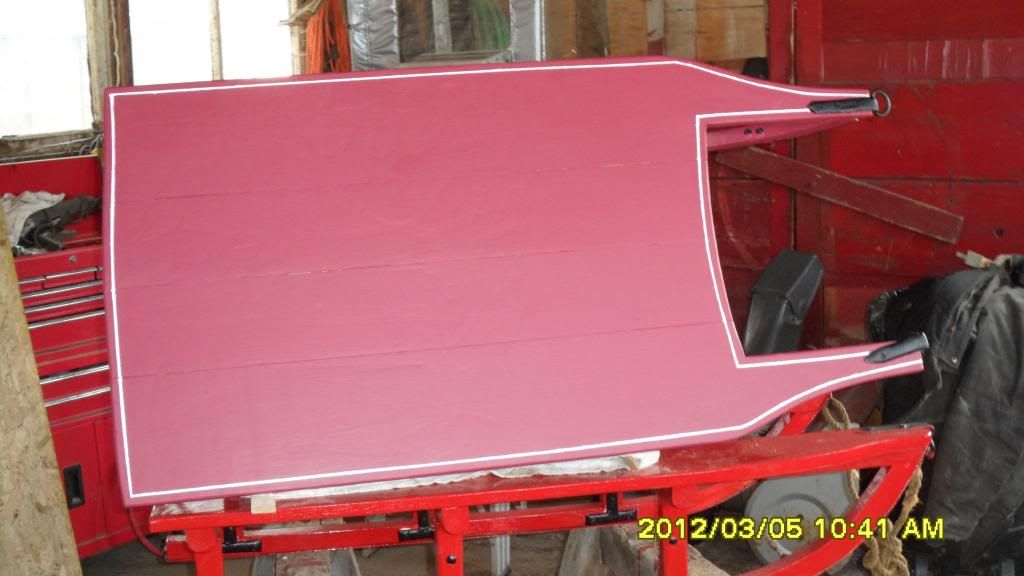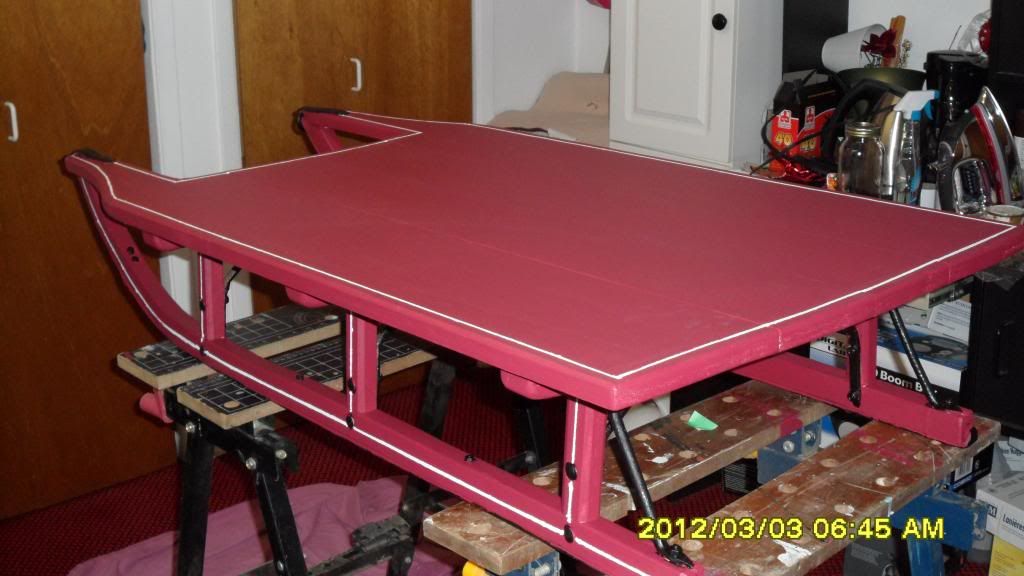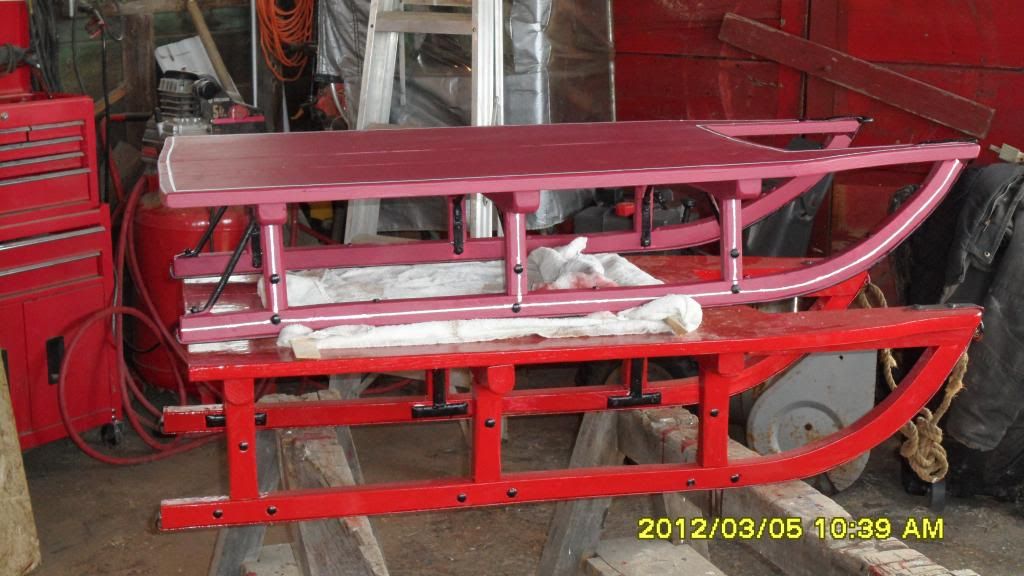|
 Re: historic hewing questionnaire
[Re: Gumphri]
#29948
12/18/12 02:32 AM Re: historic hewing questionnaire
[Re: Gumphri]
#29948
12/18/12 02:32 AM
|
Joined: Mar 2002
Posts: 1,198
northern hewer
 OP
OP
Member
|
OP

Member
Joined: Mar 2002
Posts: 1,198 |
Hello everyone tonight again
Hi Leslie
Speaking for myself--poplar around here is not a very popular type of wood, very limited in its uses--except the discussion above of course--it isn't even very good for the stove, although I do burn it rather than throw it away--we here in this area of Ontario Canada, have a couple of natural polars, and a few introduced types like Carolina Poplar, and another type a real slim tall tree the name escapes me --there could be more, maybe someone that knows varieties better than I can come forward
NH
|
|
|
 Re: historic hewing questionnaire
[Re: northern hewer]
#29951
12/18/12 07:28 AM Re: historic hewing questionnaire
[Re: northern hewer]
#29951
12/18/12 07:28 AM
|
Joined: Feb 2012
Posts: 273
D Wagstaff

Member
|

Member
Joined: Feb 2012
Posts: 273 |
Hello,
It's a good question of course and narrowing it down can be helpful in certain regards though I was never so concerned to go that far because the differences in varieties are not as important as the quality of individual stems so its important to go through and pick out the ones you want personally before its milled. For example the Alba version is normally good for nothing but were you to find a stem that by chance had grown good and straight and not to fast, (fat chance), with a good trunk, that wood will be a bit harder than black poplar even. For the rest, Canadian, Black, Italian... the considerations are all similar in its use. Where I come from the Cottonwood, a kind of poplar, is native and in the town and properly trimmed will grow straight and tall but in the natural habitat, out there in the desert growing next to a seasonally running water, it will branch out near the ground and so produce only reaction wood.
If you've got space for storage, or can make it, this is a handy wood to have around for many uses and I will always try to have it milled up given the chance because the last poplar I got had been cut short for firewood and like Richard writes it's not the best wood for burning.
Greetings,
Don Wagstaff
|
|
|
 Re: historic hewing questionnaire
[Re: D Wagstaff]
#29952
12/18/12 04:16 PM Re: historic hewing questionnaire
[Re: D Wagstaff]
#29952
12/18/12 04:16 PM
|
Joined: Mar 2002
Posts: 1,198
northern hewer
 OP
OP
Member
|
OP

Member
Joined: Mar 2002
Posts: 1,198 |
hello everyone tonight
In regards to my loss of memory of that tall slender variety of poplar it is called "lombardy poplar"--(my mind just returned)--it is very decorative but not much else--and I agree with you Don at times you do run across native poplar growing in the bush usually in a low area that seems to have a real nice straight lower section, and from these logs one can cut nice lumber, usually 2" planks or thicker, which if handled properly will dry down nicely, and I must add become real hard.--
well anyway the wheelbarrow is starting to take shape now--the fun project has started--when finished I am going to mix up an historic colour, probably a deep red, and stripe it nicely freehand using a small pointed brush--I will try and post a picture,--maybe need the help of my family to do that--
As I am always looking ahead I have a project that needs alittle research maybe one of you guys can help me out--I have inherited a lovely old circular grinding stone, that seems to be true and in really good shape--it is approx 24" in diameter with a 3" thickness, (and I might add heavy).
I want to mount it on a nice moveable horse, and have it powered by a small motor
I have the horse, and the motor, and the old bearings so I have a start, what I really need is the accurate rim speed for sharpening--I am guessing about 100rpm, but that might be fast, has anyone a comment?
This stone is larger (in diameter) than the normal hand powered grinding stones were, and even if you try and understand their rim speed, this larger stone might need to be slowed down
I believe this stone came from a waterpowered grist mill because I know that most of them had a large sized stone that could be powered up from a line shaft as needed for various tasks.
They were powered up using flat belts and wooden drive wheels of varying sizes, and were quite simple to use--the belts usually lay quietly on a idler wheel that did not rotate with the line shaft, and as needed were nudged over onto a driven wheel of the same diameter, along side the idler wheel, and just slipped alittle as it gained momentum
Hope to get some feed back
enjoy
NH
Last edited by northern hewer; 12/18/12 04:17 PM.
|
|
|
 Re: historic hewing questionnaire
[Re: northern hewer]
#29971
12/21/12 01:27 AM Re: historic hewing questionnaire
[Re: northern hewer]
#29971
12/21/12 01:27 AM
|
Joined: Mar 2002
Posts: 1,198
northern hewer
 OP
OP
Member
|
OP

Member
Joined: Mar 2002
Posts: 1,198 |
hello everyone tonight
What have we here?
any comments?
NH
|
|
|
 Re: historic hewing questionnaire
[Re: northern hewer]
#29977
12/23/12 02:37 AM Re: historic hewing questionnaire
[Re: northern hewer]
#29977
12/23/12 02:37 AM
|
Joined: Mar 2002
Posts: 1,198
northern hewer
 OP
OP
Member
|
OP

Member
Joined: Mar 2002
Posts: 1,198 |
hello everyone tonight the previous picture is a neighbours sleigh that I restored in conjunction with mine--he was the fellow that ended up with the hardware from my grandfather's sleigh, and the deal was that he wanted his repaired in exchange for the metal parts, I did one better, I completely restored his, it was a bit heavier and not near as dainty as the "casselman" sleigh --you be the judge, I will give you different views of both sleds This is some pics of my grandfather's handsleigh, which I nicknamed the "casselman sled" that I restored last winter, It is all new wood but I was fortunate enough to have been able to use the original metal parts, thanks to Randy, who was the last owner of the sled, which had deteriorated to the point that only the metal pieces remained enjoy NH 
|
|
|
 Re: historic hewing questionnaire
[Re: northern hewer]
#29978
12/23/12 04:37 PM Re: historic hewing questionnaire
[Re: northern hewer]
#29978
12/23/12 04:37 PM
|
Joined: Feb 2012
Posts: 273
D Wagstaff

Member
|

Member
Joined: Feb 2012
Posts: 273 |
Hello,
That's just fine. You even managed to get the good old square section nut it seems as I zoom in on the situation.
Greetings,
Don Wagstaff
|
|
|
 Re: historic hewing questionnaire
[Re: D Wagstaff]
#29979
12/23/12 08:57 PM Re: historic hewing questionnaire
[Re: D Wagstaff]
#29979
12/23/12 08:57 PM
|
Joined: Mar 2002
Posts: 1,198
northern hewer
 OP
OP
Member
|
OP

Member
Joined: Mar 2002
Posts: 1,198 |
Hello everyone tonight here is nother view of the sled showing some more pertinent details The old hardware gave the proper angles to the outward sloping of the runners, as well as the height from the ground and the overall length The metal on the runners are in two pieces as was the usual construction technique, the nose pieces come around and down about 6" or so and then the bottom steel comes up to it and meets with a forking technique, and secured at that point with a flat metal headed bolt, (like a stove bolt) All the large sleigh's metal runners were fastened similar, I suppose to faciliate replacement enjoy NH 
Last edited by northern hewer; 12/23/12 09:10 PM.
|
|
|
 Re: historic hewing questionnaire
[Re: northern hewer]
#29981
12/24/12 01:04 AM Re: historic hewing questionnaire
[Re: northern hewer]
#29981
12/24/12 01:04 AM
|
Joined: Mar 2002
Posts: 1,198
northern hewer
 OP
OP
Member
|
OP

Member
Joined: Mar 2002
Posts: 1,198 |
hello everyone tonight Here is the final picture for a comparison view of both sleds, as you can see they are very similar sleds but quite a difference in finesse The lower sleigh is more of a work horse, a little heavier construction to stand up to hard use, the upper one "the casselman sleigh"--with all original blacksmith made metal parts-- is lighter, and is more of an all around useful sled, and make no mistake can take some heavy loads for sure, but is the one that you would reach for to do 90% of the farm chores I had lots of fun doing both of them, I had to search out the naturally curved stock in the bush, which I did as we were cutting this years's firewood, the oak for the frame came from in house stock pieces that I had squirreled away up in the hay mow hope you enjoy NH 
Last edited by northern hewer; 12/24/12 01:10 AM.
|
|
|
|
|